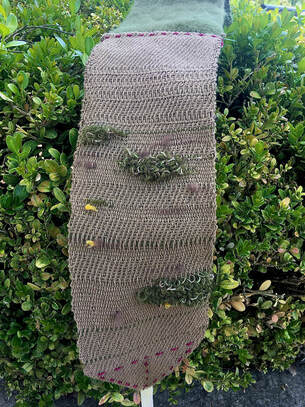|
Puttees were leg wraps used in Western military uniforms since the early 20th century. The word comes from the Hindi/Urdu word pattis, which means bandage. Read my blog post here to find out more about how this word and textile lives in these different worlds.
|
